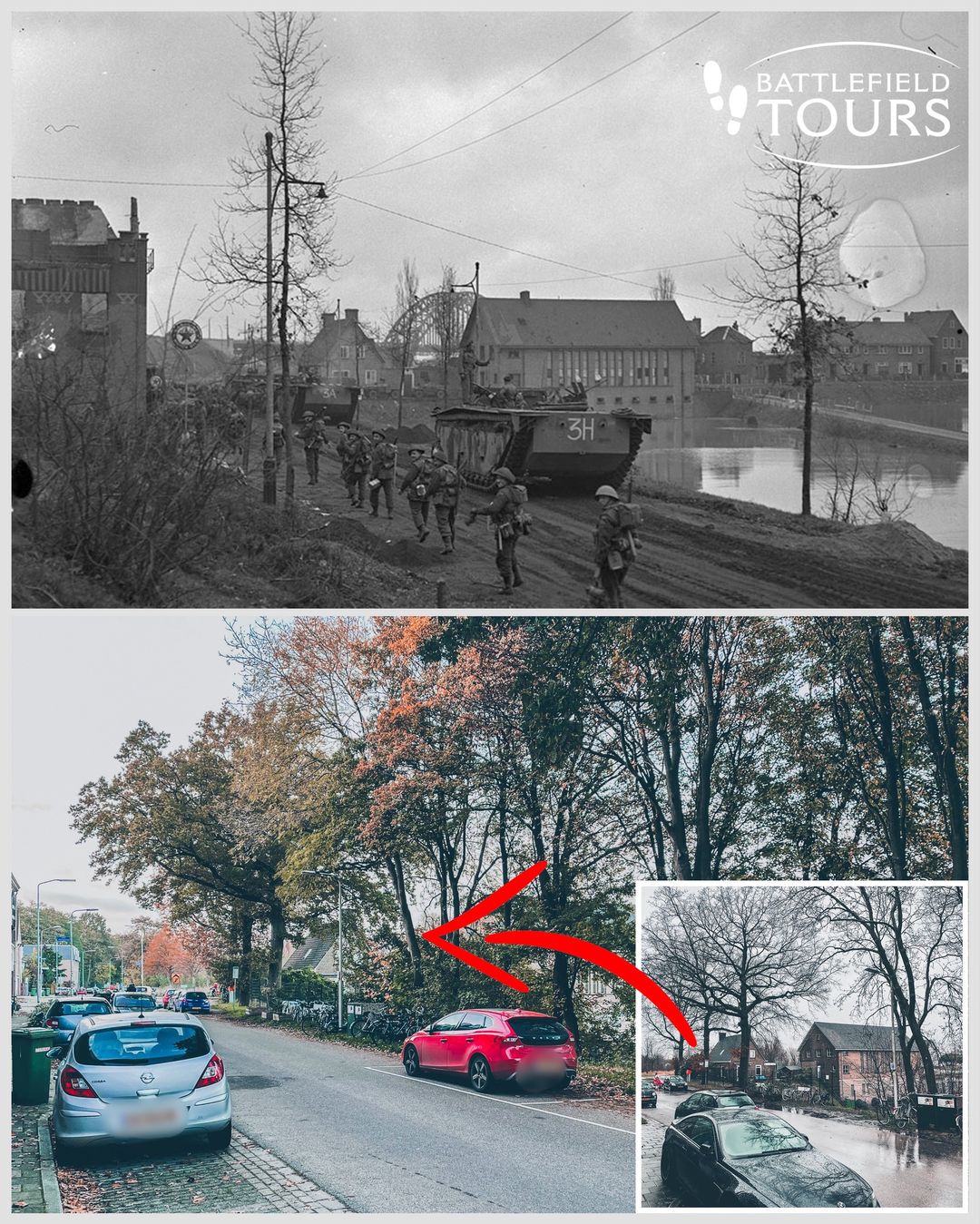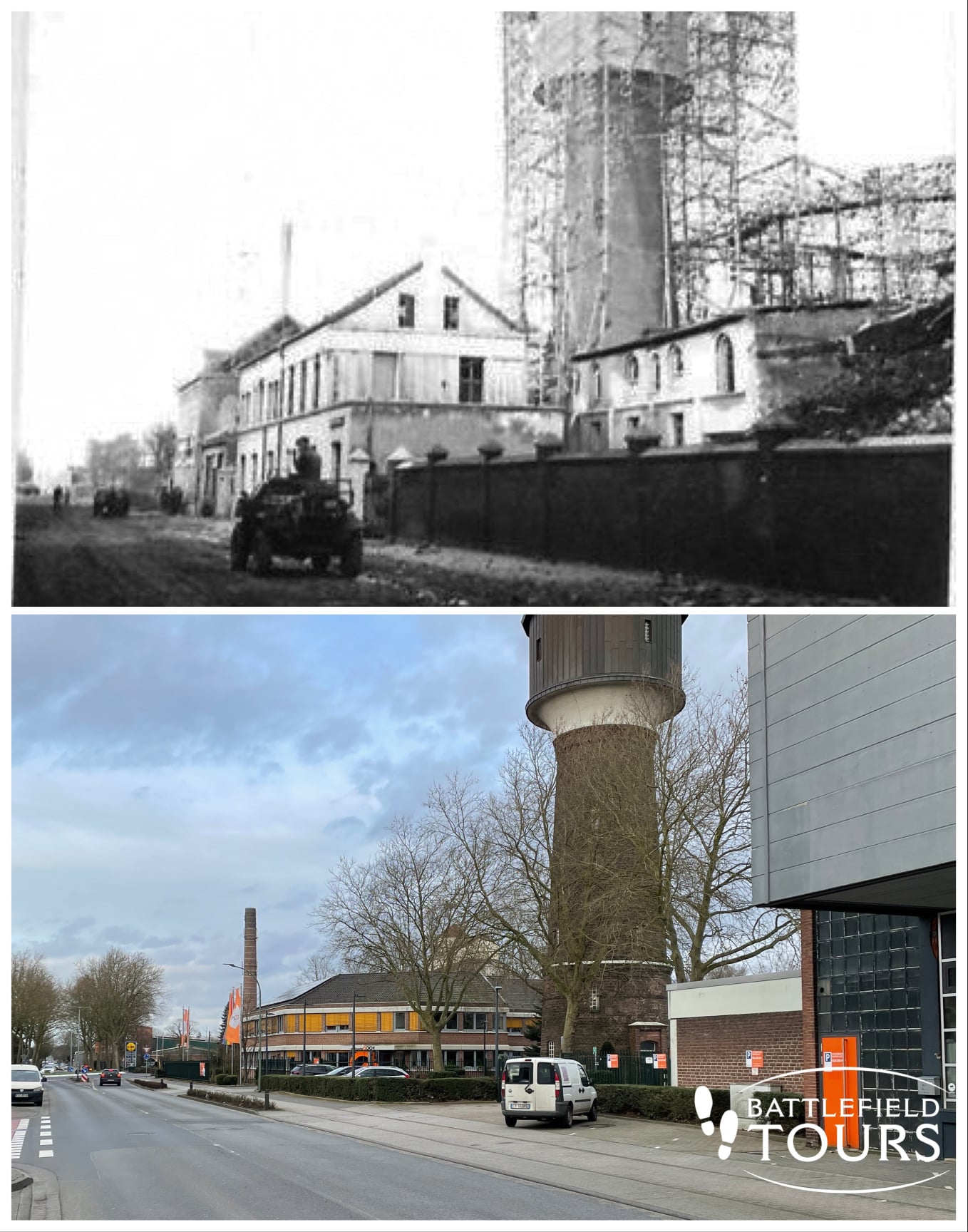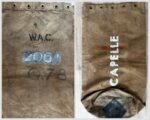Operation Veritable | Then and Now
This post is also available in:
 Nederlands
Nederlands

Operation Veritable was part of an Allied pincer-movement aiming to clear the area between the Roer and Rhine rivers of German forces. British and Canadian units attacked from the north, while the Americans closed the trap from the south. By destroying dams in the Roer, the Germans tried to hamper the operation.
Operation Veritable
Operation Veritable started on 8 February 1945. The operation was intended to be one of two pincers aimed at encircling the entrenched German forces. In this scenario British and Canadian forces would constitute the northern pincer of the attack, while U.S. forces would come up from the south to close the trap (Operation Grenade). The German army managed to prevent encirclement by destroying dams in the river Roer (not to be confused with the Ruhr river on the other side of the Rhine) which led to massive flooding; at some points the river was almost two kilometers wide.
Bad weather conditions
This flood forced the U.S. soldiers to postpone their assault. The Canadian and British forces had to go it alone. From the outset of the offensive, bad weather complicated Allied operations. General Horrocks, commanding the British forces, later said of the battle: “What was so maddening was that the whole thing could have been so easy if only the frost had continued”. A thaw turned the previously frozen ground into a quagmire, a situation that was aggravated by continuous rain and the fact that the German army had breached the banks of the Rhine. The Allies advanced slowly and were unable to fully exploit their superiority in numbers and equipment.
On 23 February the water had retreated sufficiently to allow the U.S. forces to finally cross the Roer and fulfill their mission. In the words of the Allied Supreme Commander general Dwight D. Eisenhower: Operation Veritable “was some of the fiercest fighting of the whole war […] a bitter slugging match” between Allied and German forces.

Canadian soldiers from the North Shore Regiment (3rd Infantry Canadian Division) climb onto a Buffalo amphibious tracked vehicle during the start of Operation Veritable in Nijmegen. The objective of the 3rd Canadian Division was to clear the southern bank of the River Waal from Nijmegen to Millingen and then cross the border into Germany. The specific task of the North Shore regiment was to capture and hold the towns of Zandpol and Kekerdom and factories on the south side of the Waal. Due to the efforts of the Buffalos, the objectives could easily be achieved. The Germans launched an attack on Zandpol, but this attack was repelled by the North Shores. In this attack 10 Canadians were killed and twelve were wounded, 78 Germans were taken prisoner.

The soldiers of the North Shore Regiment were photographed from a different angle on the Ubbergseweg in Nijmegen during the start of Operation Veritable. The Dutch German pumping station can be seen in the background. Part of the Waal bridge can be seen behind the pumping station.

Impressive then and now picture of the Molenweg in Groesbeek with a view towards the restaurant Oude Molen. This picture shows Churchill tanks of 34th Tank Brigade during operation ‘Veritable’ on February 8, 1945. Veritable was the code name for the operation which would clear the Germans from the ground between the parallel rivers of the Maas and the Rhine and drive them back over the latter. To support this offensive, the British and Canadians brought up their biggest artillery support of the war. Some 1,050 guns were to be used, including 576 field guns, 280 medium, 122 heavy and super-heavy, and 72 heavy antiaircraft guns.

During operation Veritable, the Scottish 5th Black Watch Battalion advanced from Pyramid Hill, via Milsbeek to make contact with the 1st Gordon Highlanders and from the Reichswald via Ottersum to Gennep. This town was of strategic importance for the attack on the German city of Goch. Unfortunately, the Germans had blown up the bridge in Gennep and dug in behind the river Niers. It was decided to cross the Niers with boats during the night of 11/12 February 1945. The crossing was followed by fierce street fighting, each house in the destroyed center of Gennep had to be cleared one by one.
Tom Renouf, one of the Scottish soldiers, writes in his diary: ‘The storefronts are all destroyed and the roofs of the houses are about to collapse. I stormed into such a house and encountered three Germans. One cried out in pain, he had a broken femur. The soldiers were old and scared and seemed happy to be captured…”
After the first attack on 11 February at 07:15 am and the capture of the blown-up bridge, work was done at high speed to build a bailey bridge over the destroyed Niersbrug to lead the heavy equipment into the town. This photo clearly shows how the British infantry of the C-Company, 5th Black Watch is involved in fierce street fighting in Gennep. The situation has now completely changed, the house in the middle is still there (This is a staged photo, taken after the liberation of Gennep)

German prisoners of war are escorted in Ottersum (Gennep) by Scottish soldiers of the 5/7 Gordon Highlanders, 51st Highland Division. After fierce street fighting, Gennep was liberated on 12 February 1945. The capture of Gennep was essential to open the way for the advance towards the German city of Goch and the heart of Germany.

Impressive photo of a 17 Pounder Valentine, Mk I, Archer in a flooded street in Kranenburg (Germany) during operation Veritable. During the start of operation Veritable on February 8, 1945, German engineers blew the sluice gates at Wylermeer, followed by the sluice in Bienen. After being delayed by mines and mud, Kranenburg was captured by the British infantry at 6:30 PM on February 8, 1945. But then they discovered that the main street Nijmegen-Kleve was already flooded.
Water continued to rise on February 10. The water masses crossed the Nijmegen-Kleve road up to a distance of 5 miles and partially rose to a meter high. For that reason, the Allies used ferries delivering vehicles to the higher ground between Kranenburg and Nütterden where the road was higher than elsewhere. This flooding right up to Kranenburg Bend led to a major traffic problem for the allies. However, because the majority of the population had already been evacuated in September 1944, they did not suffer from the flooding.

Then and now picture of British soldiers of the Highland Light Infantry with their new trophy at Kranenburg during operation Veritable. Operation Veritable, also known as the battle of the Reichswald, was the British and Canadian largest operation since Normandy. The aim was to destroy the German positions between the River Maas and the River Rhine and to break through between these two rivers, allowing the formation of a front along the Rhine.

By 17 February 1945, three British divisions were closing in on Goch in Germany during operation Veritable. The 53rd (Welsh) Infantry Division and the 43rd (Wessex) Division from the north and northeast, and the 51st (Highland) Division from the north-west. General Horrocks planned a full corps operation to take the town of Goch. Using crossings over the outer ditch seized by the Wessex Division’s 214th Brigade, the 44th Lowland Brigade (15th Division), moving up from Cleve by Kangeroo tanks, was to assault on 18 February 1945 between the Goch-Cleve railway and the Calcar road, while the 51st Division cleared that part of Goch lying south of the Niers.
West of the railway the 53rd Division would mark time on the high ground, ready to commit one or more brigades at short notice. The operation went on as planned. During the night of 17-18 February 1945 the 214th Brigade established seven crossings over the outer ditch, about 2500 yards from the heart of the town. They met heavy machine-gun fire, but by midnight both had consolidated bridgeheads over the inner ditch. On the other side of the Niers the Highland Division’s 153rd Brigade, attacking as planned and had entered the southern part of the town. Rubble from bombing having stopped the tanks, the infantry had close street-fighting all next day and the following night. The German garrison commander surrendered on the 19th, but confused fighting was to continue south of the Niers for another 48 hours. By the evening of 21 February 1945 the battered town of Goch was free of German troops. This photo shows German prisoners of war being escorted through the streets of Goch on February 20, 1945. © IWM B 14759

A Daimler Scout Car of the British 15th Scottish Infantry Division passes the water tower on the Klever Straße in Goch on February 20, 1945. © IWM B 14797

Kleve and Goch are liberated on 11 February. Balfour visits the site immediately to protect historically significant buildings, art objects and documents from destruction and looting. Although bombs have completely destroyed the collegiate church of Kleve, he manages to salvage parts of two large, 16th-century wood carved altarpieces and move them to safety.
In Goch, he finds the city archives in a building that has already been partly plundered. He collects enough to fill three full trucks and brings them to Kleve. He set up his headquarters in the Capuchin monastery in Spyck. In Kalkar, he finds the city archives in half-barricaded rooms. He marks the rooms as containing items of historical value. He does the same for the parish archive in Kranenburg. One of Balfour’s great merits is the preservation of the Gochse Steintor, a monumental gateway and part of the medieval city fortress.
The chaos of those days is evident from the fact that the exact date of Ronald Balfour’s death and the circumstances under which he died are unknown. Balfour’s documents dated 3 March 1945 are his last sign of life. His parents are informed that 4 March 1945 is the day of his death. After the war, it is said that Balfour was killed by shrapnel as he left a church with altar fragments in his arms.
In his short service with the MFAA, Balfour managed to secure many art treasures. Kleve and Goch are still incredibly grateful and pay homage with a street name and an audio spot from the Liberation Route Europe. This then and now photo shows the 14th century Gochse Steintor. The Nazis had placed a text from the Hitler Youth on every wall. It was practically the only undamaged building in Goch. © IWM B 15098
Sources:
- Official History of the Canadian Army in the Second World War, Vol III The Victory Campaign: The Operations in Northwest Europe, 1944-45 by Stacey, C.P.
- Alastair Borthwick: Battalion: British Infantry Unit’s Actions from El Alamein to the Elbe, 1942-45.
- The long left flank by Jeffrey Williams
- Liberation Route Europe








